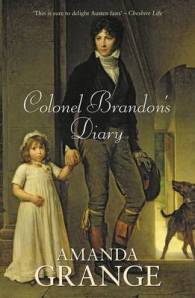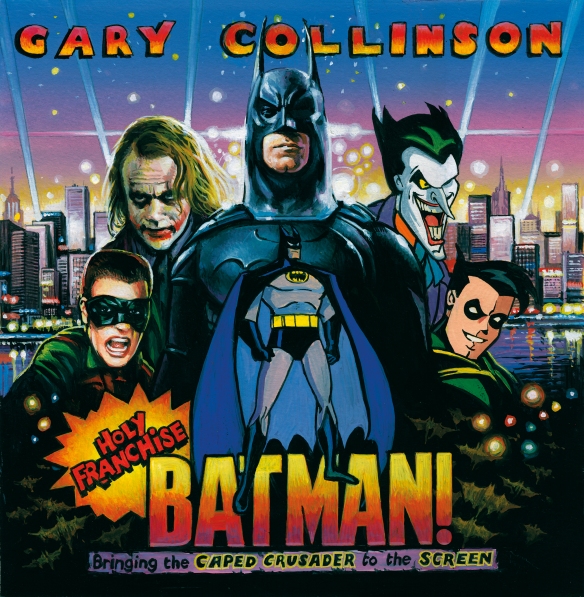
Credit: Frank Baron
Wendy Perriam has not one but two books out with Robert Hale Ltd this month. Her novel Broken Places is out in paperback following on from its tremendous success in hardback. Her collection of short stories, I’m on the Train!, is also out on Monday.
In the first part of her interview with us, Wendy talks about writing from an early age, her long journey into publishing, getting kicked out of convent school and just where her ideas come from.
Don’t forget to check back later for part two …
Have you always enjoyed writing, from a young age?
Absolutely! I wrote my first poems and stories from the age of four and my first ‘novel’ at eleven. The latter was sheer wish-fulfilment. Entitled A Pony at Last, it featured an ordinary girl like me, who longed to own a pony – highly unlikely in my own case, since we lived in a suburban semi, in a cul-de-sac, miles from any field or stable. The only horse in evidence was the milkman’s decrepit nag. However, my heroine and alter ego becomes the proud possessor of a thoroughbred chestnut mare, so, before I’d even reached my teens, I had realized the power of writing to remake an unsatisfactory world.
I was a sickly, unsporty child, so, while my siblings went skating and cycling, I preferred to curl up with a book, or pen my own variations on Black Beauty or the Famous Five. In fact, I spent much of my childhood with imaginary companions or in imaginary situations – as do several of the characters in my new short-story collection, despite their being adults. In the story Michael, the office dogsbody, Carole, finds strength and support in an Archangel, who becomes her guide, her protector, her shopping-consultant and even her alarm clock. And then there’s eighty-eight-year-old Connie, in Thick Hair, who re-enacts her wedding day, tragically aborted in 1941, when her fiancé’s ship went down; while Jodie, in Hope and Anchor, not only conjures up an imaginary dog, but also transforms her unloving, absent father into a proud and doting dad.
‘I spent much of my childhood with imaginary companions or in imaginary situations’ – Wendy Perriam on a childhood love of writing.
Although now in my seventies, I still draw on the power of the imagination, both in my life and in my work. I find it both consoling and compensatory; an alternative universe where anything can happen.
What was your journey into getting published like?
Well, I’d dreamed of being an author from early childhood, but a series of reverses prevented me from achieving publication until a much later stage. Firstly, I lost my once-all-important Catholic Faith and was expelled from my convent boarding-school. Told I was in Satan’s power, I lived in terror of damnation, which precipitated a long period of depression, followed by physical illness, fertility problems and a painful divorce. So it wasn’t until my remarriage – and the ripe old age of forty – that I saw my first book in print.
I’d been taken on by a literary agent, on the strength of my short stories – written more as diversion than in the hope of publication. This agent said that, if I wrote a novel, he’d publish it. Despite my own deep-seated doubts, he proved true to his word. Absinthe for Elevenses was accepted by Michael Joseph, the first publisher he tried, and came out in 1980. After that, I just put my head down and produced the next book – and the next – scared that if I stopped, my lucky break might come to a precipitous end!
How do you spend your average writing day?
I always start early in the morning and postpone household chores, emails and phone-calls till later in the day. It’s all too easy to waste vital energy on such trivial distractions! But, first, I make a cup of coffee in my special ‘writer’s mug’ – a Peter Rabbit one I’ve had since babyhood. Perhaps all those busy bunnies, racing round the rim, provide me with a good example of enterprise and exertion!
‘I just put my head down and produced the next book – and the next – scared that if I stopped, my lucky break might come to a precipitous end!’ – Wendy Perriam on the fear that comes with finally being published.
 With my earlier novels, I’d start at page one and keep going till I reached the end, not stopping to revise until the first draft was completed. Now I’ve changed my method and tend to revise continuously – rewriting each chapter or each short story over and over, until I’ve licked it into reasonable shape.
With my earlier novels, I’d start at page one and keep going till I reached the end, not stopping to revise until the first draft was completed. Now I’ve changed my method and tend to revise continuously – rewriting each chapter or each short story over and over, until I’ve licked it into reasonable shape.
I prefer to write by hand, in the same red notebooks I favoured as a child and using the same messy, slapdash scrawl. This seems to free the sub-conscious and thus aid the imagination, and I always encourage my creative writing students to swap the computer for a pen. Certainly in my own case, I find composing on a computer inhibiting and unnatural – perhaps because I didn’t own one until I was in my sixties. I didn’t even know how to type and had to enrol on a beginners’ course – the oldest student in the class!
But, once I’ve done my writing-stint, I do – reluctantly – go to the computer and turn my messily scrawled pages into a neat typescript. Then I spend the afternoon revising this typed draft, continually retyping and re-revising, until my mind is soggy and I realize it’s time to call a halt. At that stage, I turn my attention to emails and household tasks, although making the beds at 5p.m. seems appallingly sluttish and I hear my long-dead mother’s voice in my head: ‘Any decent housewife does the chores first thing!’
Where do your ideas come from?
My ideas spring from anywhere and everywhere, especially those for short stories. In my new collection, a pub sign swinging in the wind gave me the idea for Hope and Anchor, while The Little Way arose from viewing the relics of St Therese of Lisieux, on display in Westminster Cathedral. Baggage was prompted by my own total inability to pack light. Even for a weekend-break, I’ll take a cabin-trunk.
I plan to start on an eighth collection of stories, once I’ve completed my new novel, so I’m already on the lookout for ideas. Wherever I go, I keep my senses primed, ready to pounce on even the smallest incident – a puppy in the park, a punk’s flamboyant hairstyle, a fracas on a bus – and then let my imagination get to work and turn this tiny seed into a story.
‘Wherever I go, I keep my senses primed, ready to pounce on even the smallest incident…’- Wendy Perriam on where her ideas come from.
Ideas for novels tend to come less randomly and need much more working out. I may start with a character, like Catherine in Second Skin, who feels she’s never been the person she was born to be, or with a concept such as fear – as in my last novel, Broken Places, or with a situation, such as Lorna’s bungled bunion operation in Tread Softly. Yes, even an unsightly bunion can kick-start a novel!
Check back later today for part two of the interview, when Wendy discusses the digital age and what’s next for her books…
 Wondering what to buy your nearest and dearest this holiday season? Wonder no more. We at Robert Hale Ltd have got something for everyone – from gripping ebooks for the technologically advanced to the ultimate Bat-bible for comic book fans and everything in between.
Wondering what to buy your nearest and dearest this holiday season? Wonder no more. We at Robert Hale Ltd have got something for everyone – from gripping ebooks for the technologically advanced to the ultimate Bat-bible for comic book fans and everything in between. If you fancy giving the men in your life something to laugh about this holiday season, check out Wearing Combovers and 49 Other Things That the Modern Man Shouldn’t Do, a book suitable for men both young and old that is packed with witty, laugh-out-loud observations on the human condition. Ranging from ‘Don’t be a Bond fantasist’ to ‘Don’t leave a high-five hanging’, this book is a hilarious addition to any man’s Christmas stocking.
If you fancy giving the men in your life something to laugh about this holiday season, check out Wearing Combovers and 49 Other Things That the Modern Man Shouldn’t Do, a book suitable for men both young and old that is packed with witty, laugh-out-loud observations on the human condition. Ranging from ‘Don’t be a Bond fantasist’ to ‘Don’t leave a high-five hanging’, this book is a hilarious addition to any man’s Christmas stocking.




